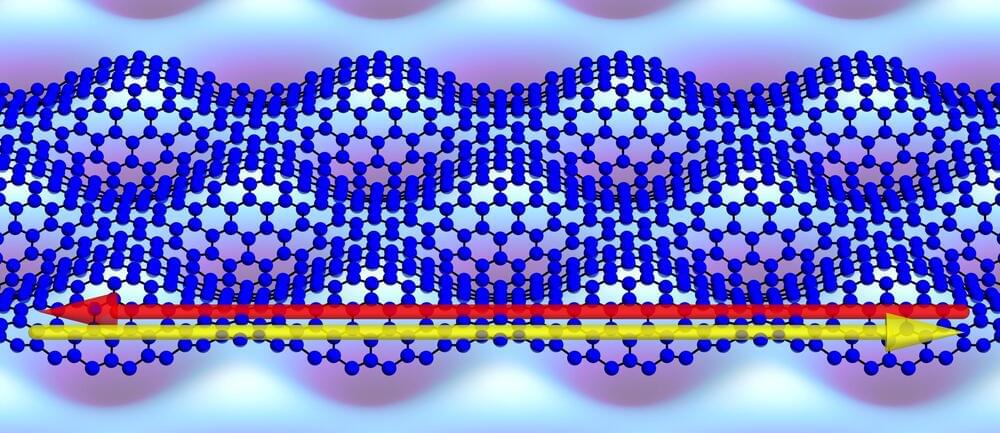Since graphene was first isolated and characterized in the early 2000s, researchers have been exploring ways to use this atomically thin nanomaterial because of its unique properties such as high tensile strength and conductivity.
In more recent years, twisted bilayer graphene, made of two sheets of graphene twisted to a specific “magic” angle, has been shown to have superconductivity, meaning that it can conduct electricity with very little resistance. However, using this approach to make devices remains challenging because of the low yield of fabricating twisted bilayer graphene.
Now, a new study shows how patterned, periodic deformations of a single layer of graphene transforms it into a material with electronic properties previously seen in twisted graphene bilayers. This system also hosts additional unexpected and interesting conducting states at the boundary. Through a better understanding of how unique properties occur when single sheets of graphene are subjected to periodic strain, this work has the potential to create quantum devices such as orbital magnets and superconductors in the future. The study, published in Physical Review Letters, was conducted by graduate student Võ Tiến Phong and professor Eugene Mele in Penn’s Department of Physics & Astronomy in the School of Arts & Sciences.
